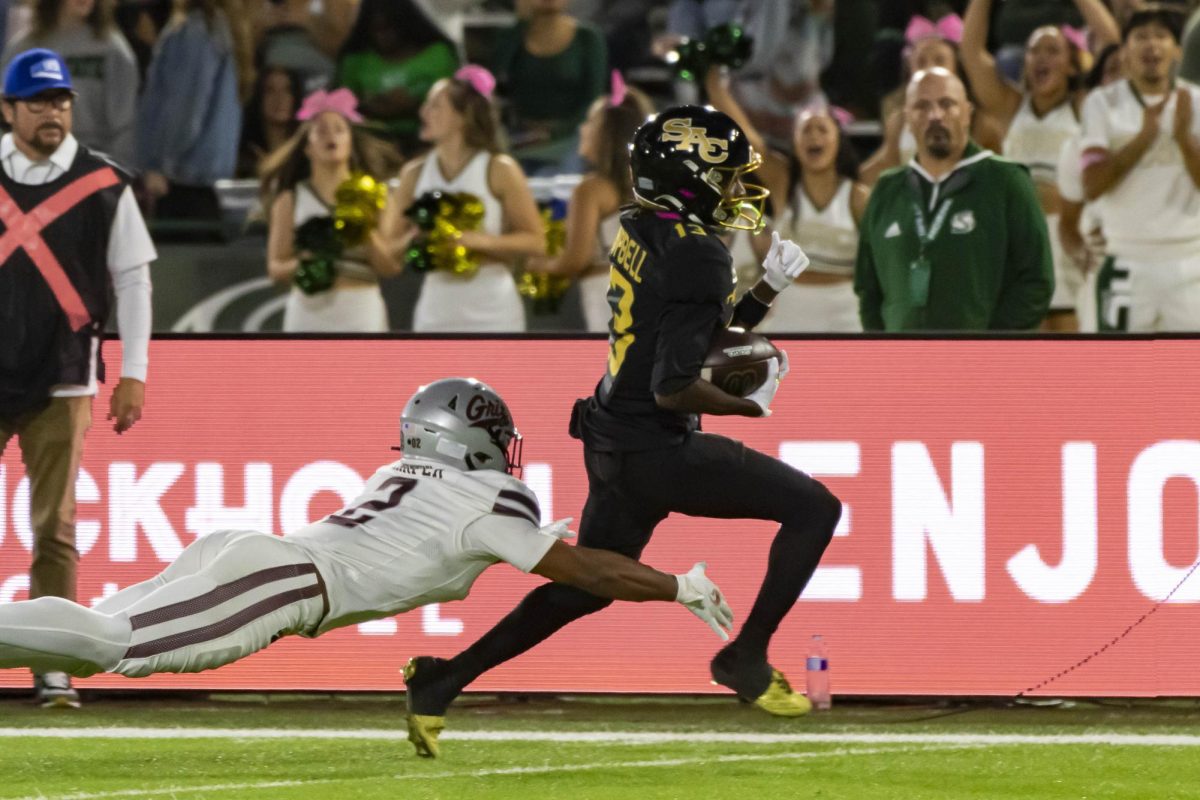Low enrollment decreases university budget
January 6, 2007
Nearly $1 million of the 2006-07 university budget may have to be returned to the CSU system if enrollment doesn’t pick up in the spring semester, according to estimations by Larry Glasmire, director of special programs and enrollment analysis.
While enrollment overall has increased in almost all categories ?” including new freshmen, junior transfers and graduate students ?” the total number may still fall short of the enrollment target required by the California State University chancellor’s office to avoid payback.
The amount of money to be paid back is determined by the number of full-time equivalent students short of target. Each full-time equivalent student represents 15 units taken by undergraduate students and 12 units taken by graduate students.
It could be argued that it’s too soon to tell whether payback is necessary since the university still has spring semester to bring up enrollment. The total number is taken by adding the number of full-time equivalent students in the summer, fall and spring semesters and dividing that total by two, Glasmire said.
But since fall enrollment wasn’t ideal, spring doesn’t hold much promise either.
“It’s always lower than fall,” Glasmire said. “Primary because we graduate students at end of fall, and we don’t enroll as many students in spring as fall.”
Speculating from the historical patterns of spring enrollment, Glasmire estimates that the university may be short of the target by .7 percent.
For the last three years, Sacramento State has been under target according to an enrollment report from the CSU chancellor’s office.
No payback was made the last three years because the chancellor’s office allowed campuses a 2 percent threshold for missing the target, said Rodney Rideau, CSU budget director.
But the enrollment target has to be made this year with no allowance for being off mark, Rideau said.
“Because the state isn’t giving us any leeway, we can’t give (the campuses) any leeway,” he added.
As a result of the Higher Education Compact, an agreement made between Gov. Arnold Schwarzenegger and the CSU and UC systems to increase enrollment in exchange for financial support, the chancellor’s office agreed to annual system-wide growths of 2.5 percent until 2010-11, according to the CSU website.
Chancellor Charles B. Reed distributes the system-wide growth among the campuses by consulting the potential of growth of each campus with each university, according to state demographic forecasts, enrollment demands and other analysis, Rideau said.
With 23 campuses, not to mention the Universities of California and universities nationwide, competing for students each year, Sac State isn’t alone in the struggle to keep up with annual growth targets.
Last year, nearly half of the CSU campuses fell below target, and seven campuses fell under the 2 percent threshold, according to the enrollment report.
Out of all of the campuses that had to return a portion of the budget, Dominguez Hills suffered the worst blow by having to return about $1 million and the baseline budget allocation was reduced by nearly $1.5 million, said Russ Hudson, media relations and public affairs coordinator of Dominguez Hills.
Last year’s cut was the second year Dominguez Hills had to make due to low enrollment.
“Dominguez Hills serves an area with a concentration of lower than average social economic level, and it’s the most diverse school in the system,” Hudson said.
The average age for students in Dominguez Hills is 28 years old, Hudson said. Many of the students have jobs, families and are only able to go school part-time, causing the full-time equivalent student count to lower.
For Sac State, a lot of effort has been put in radio ads, e-mails, phone calls and representation on high school campuses to emphasize the importance of a college degree and encourage students to file applications.
Philip Garcia, senior director of analytic studies at the chancellor’s office, said campuses have the option of adjusting application periods to address their needs.
A campus could keep the application period open to draw in more students and close it when enough students are admitted, Garcia said.
Emiliano Diaz, director of outreach, admission and records at Sac State, said it definitely is an option for the university.
Currently the university is still accepting applications for spring and fall of 2007.
“It’s one of those glass half open or empty things,” Diaz said. “I think it’s half full.”
Mary Chou can be reached at [email protected]





























































































































